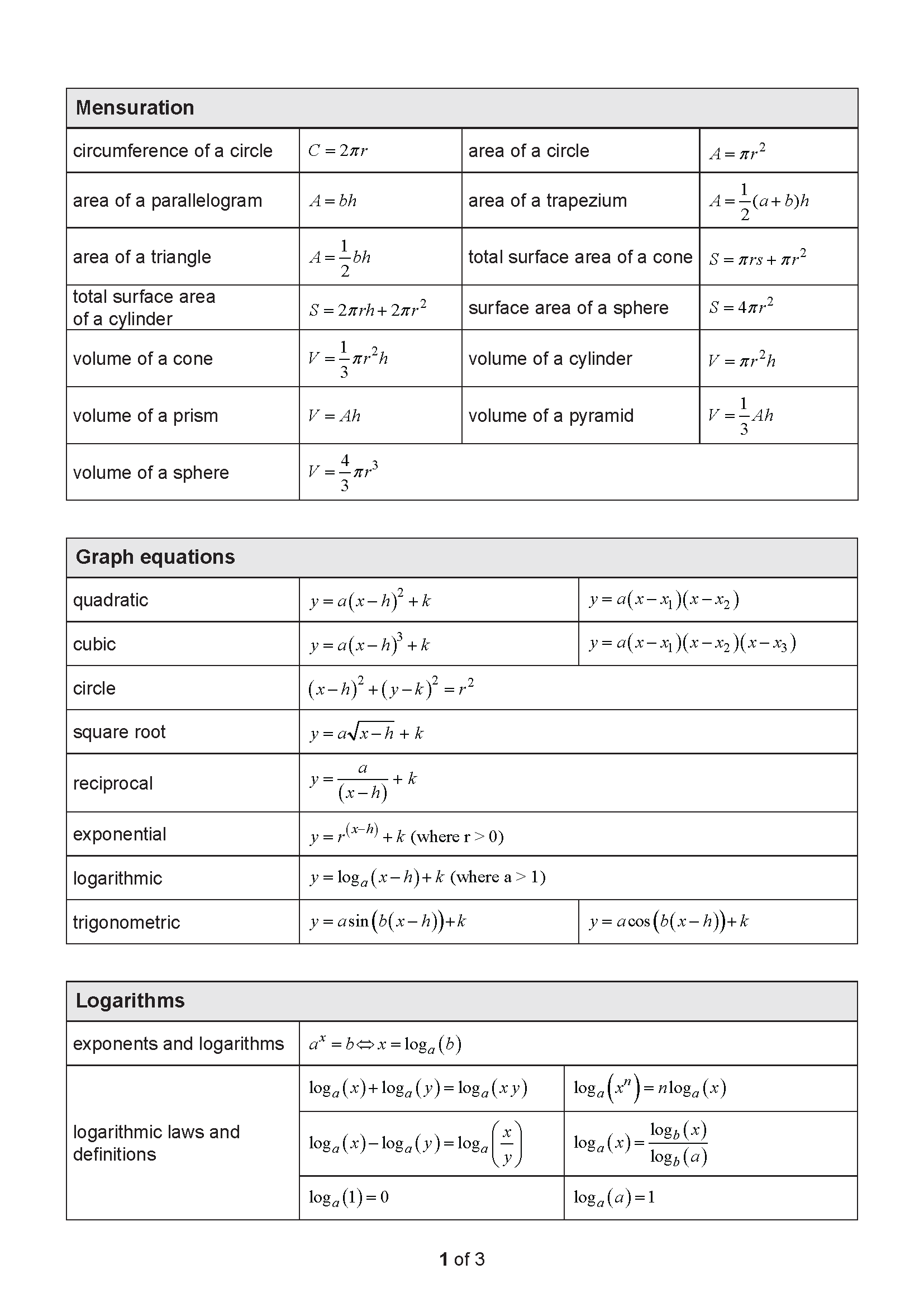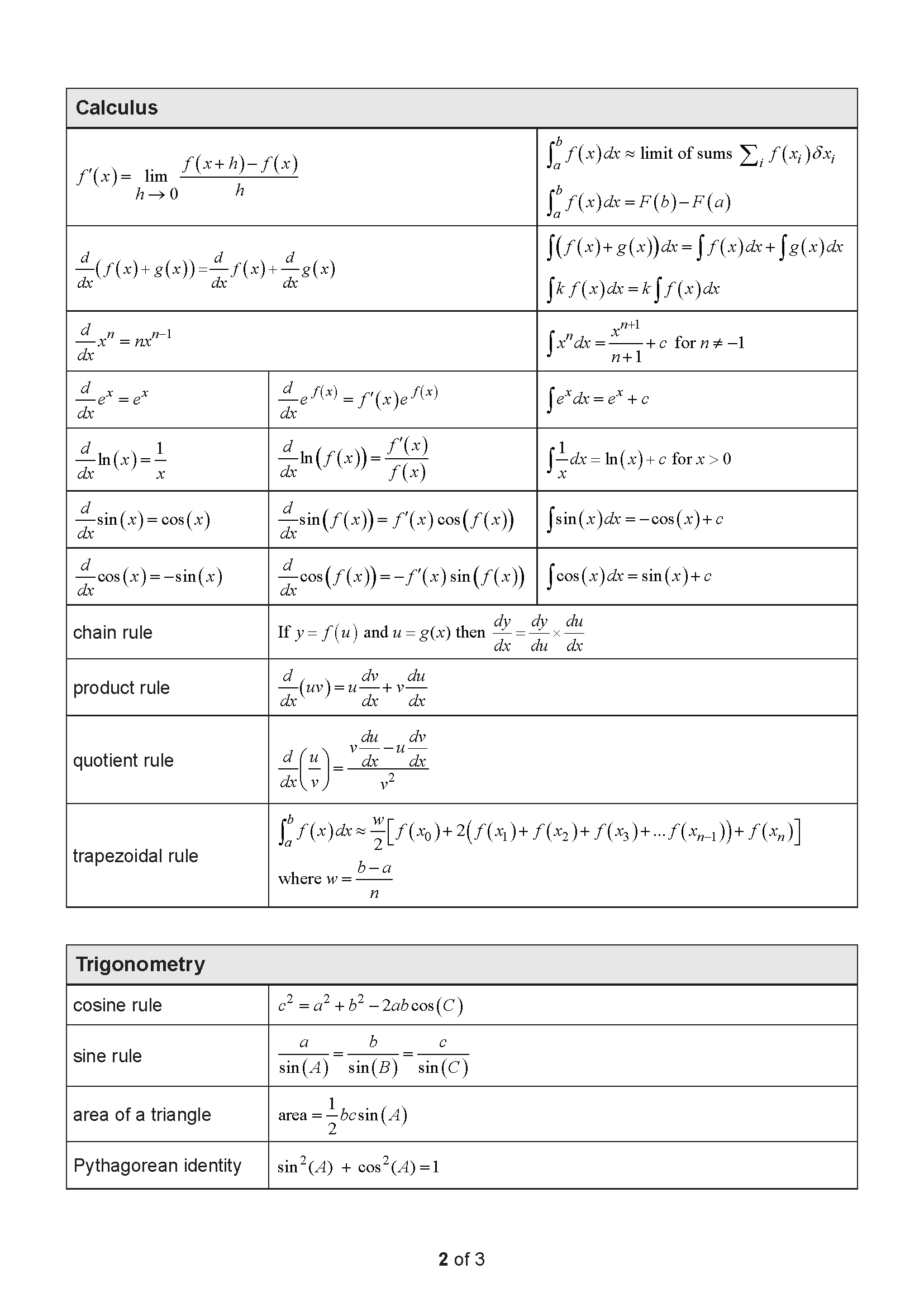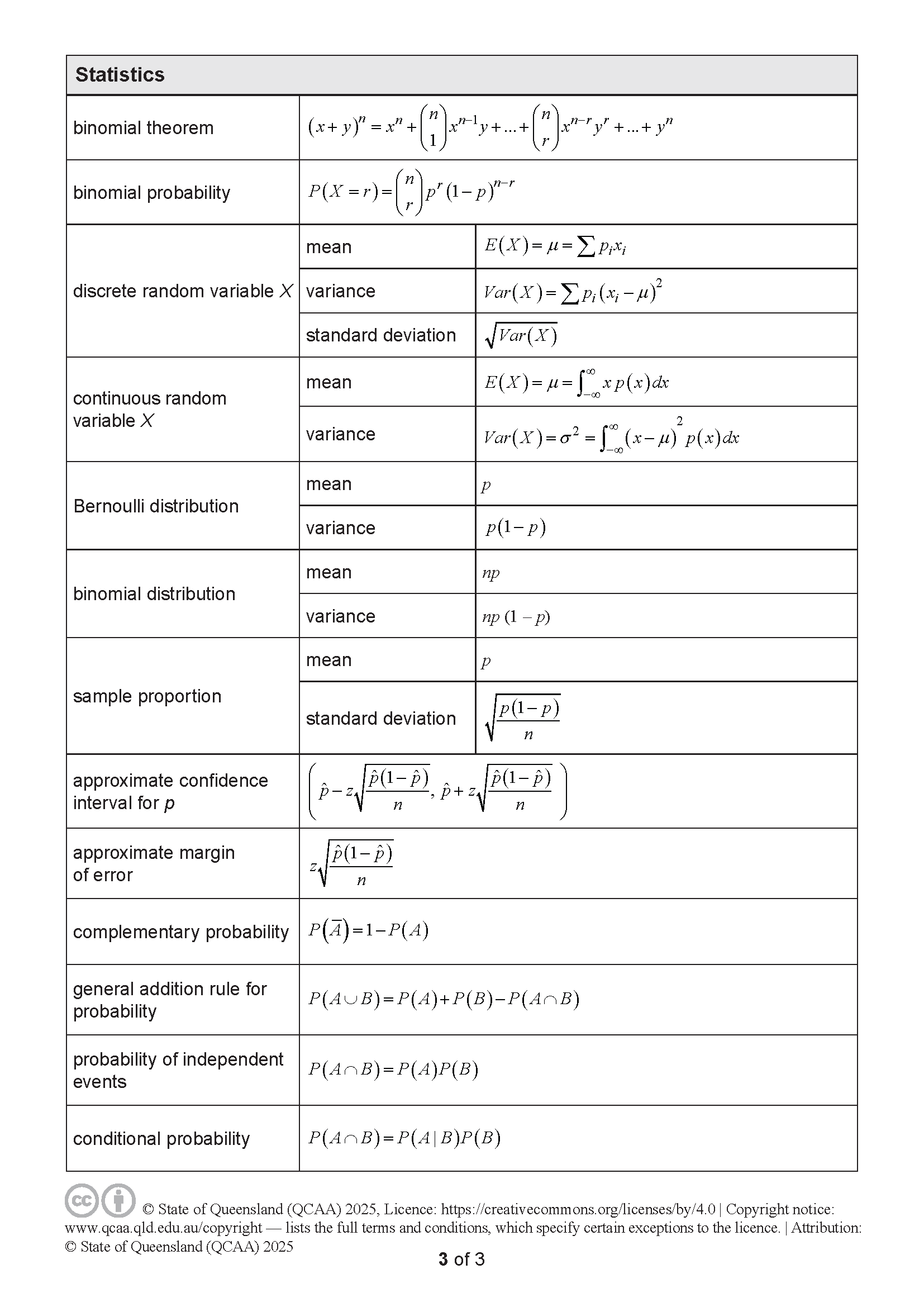QCAA Maths Methods Paper 2 Integral Calculus Mini Test 1
External Assessment Paper 2 — Technology-active
Number of marks: 10
Perusal time: 1 minute
Writing time: 15 minutes
Section 1
Instructions
• This section has 10 questions and is worth 10 marks.
• Use a 2B pencil to fill in the A, B, C or D answer bubble completely.
• Choose the best answer for Questions 1 10.
• If you change your mind or make a mistake, use an eraser to remove your response and fill in the new answer bubble completely.
Determine \(f(x)\), given \(f'(x) = 6x^2 + \frac{1}{x^2} + \frac{1}{x}\) and \(f(1) = 5\).
- (A) \(f(x) = 2x^3 + \frac{3}{x^3} + \ln(x) - 1\)
- (B) \(f(x) = 2x^3 - \frac{1}{x} + \ln(x) + 4\)
- (C) \(f(x) = 2x^3 - \frac{1}{x} + \frac{2}{x^2} + 2\)
- (D) \(f(x) = 2x^3 + \frac{3}{x^3} + \frac{2}{x^2} - 2\)
Section 2
Instructions
• Write using black or blue pen.
• Questions worth more than one mark require mathematical reasoning and/or working to be shown to support answers.
• If you need more space for a response, use the additional pages at the back of this book.
– On the additional pages, write the question number you are responding to.
– Cancel any incorrect response by ruling a single diagonal line through your work.
– Write the page number of your alternative/additional response, i.e. See page …
– If you do not do this, your original response will be marked.
• This section has nine questions and is worth 45 marks.
An object experiencing straight-line motion along a path has an acceleration (m s\(^{-2}\)) defined by the function \(a(t) = 3\sin(2t)\) where \(t\) is time (s) since the object begins moving, \(t \ge 0\).
When \(t=0\), both displacement and velocity are zero.
On the path is a motion sensor that is able to detect motion up to 2 metres away.
The object passes directly by the motion sensor when \(t=3\).
Determine the average velocity of the object while it moves through the range of the sensor.
State the trapezoidal rule and use it with six strips to determine an approximate value of the definite integral for the curve of \(f(x) = 4(x-3)^2\) from \(x = 0\) to \(x = 3\). Show all substitutions made into the rule.
END OF PAPER


